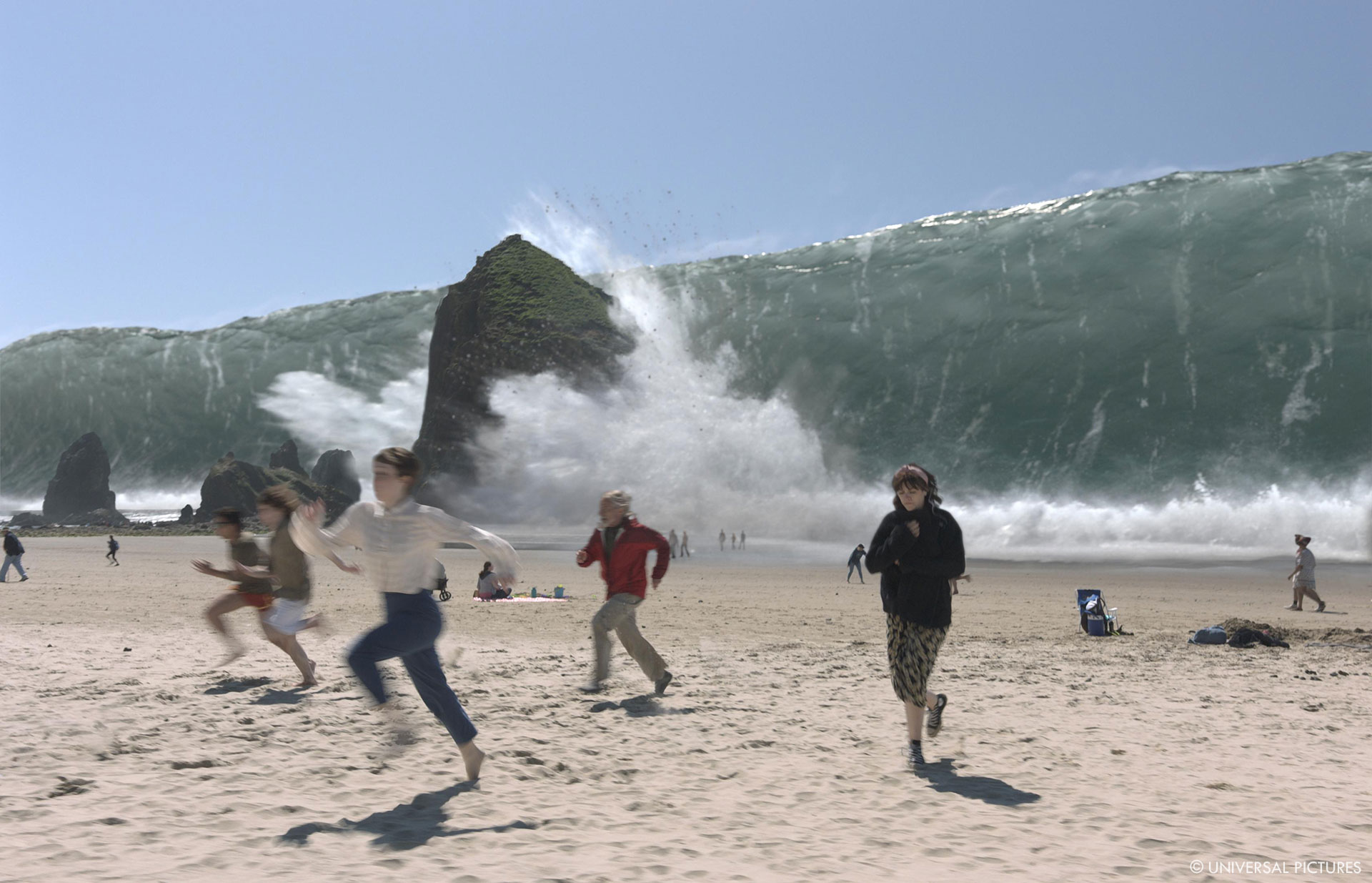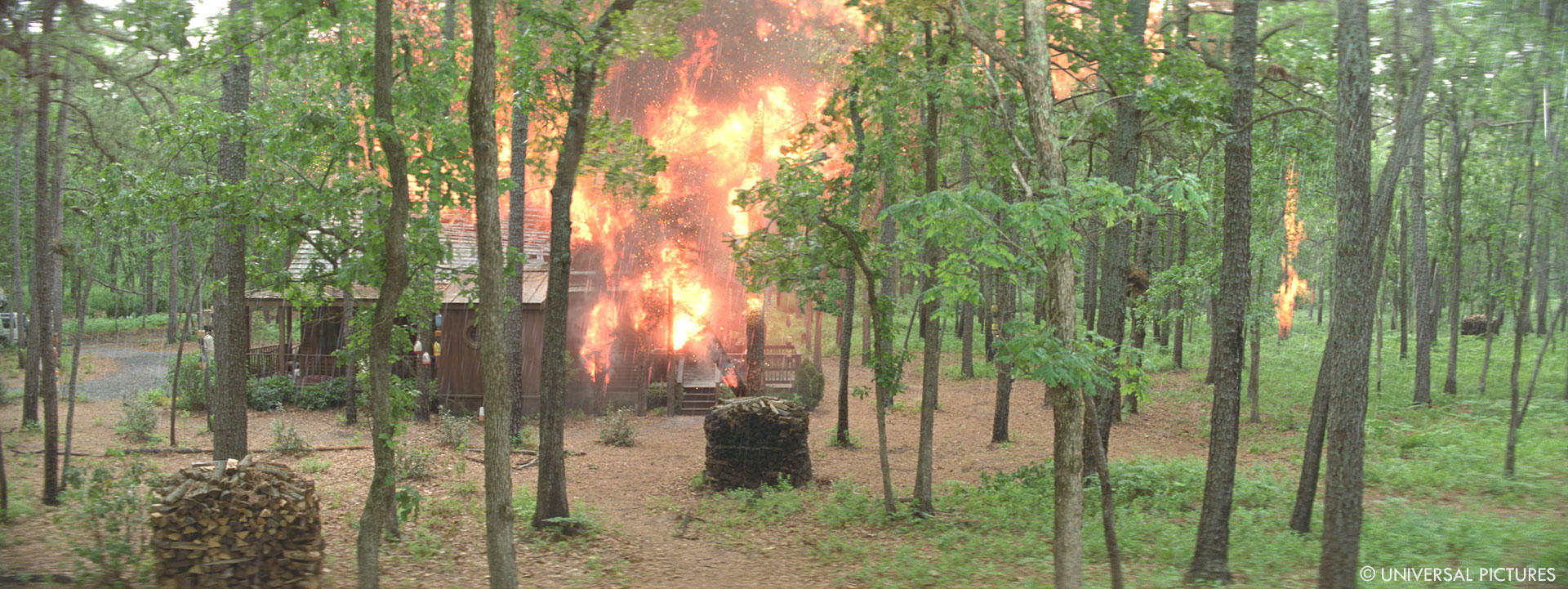In 2022, Tommy Tran explained the work of FuseFX for the 3rd season of The Orville. He then worked on She-Hulk: Attorney at Law.
What was your feeling about working with Director M. Night Shyamalan?
M. Night was delightful to work with, and we hope a solid foundation has been established creatively. He was very professional, insightful, and personable and knew how to convey his creative visions to my team clearly and concisely. The best part of working with him was that even though he had his ideas, at times, he’d let us run with our vision and have us present our interpretations of the shot. “Give me options,” he said at times. It’s always a pleasure to work with open-minded directors such as M.Night. It makes the creative process easier and just all around a fun time.
How was the collaboration with him and the VFX Supervisor?
The collaboration and communication with their team was excellent. Considering the fact that this was the first time we had worked with them. Usually, there is a learning curve that takes a beat or two for both teams to be in lockstep. However, in this case, both teams were in sync from the get-go. I attribute this to the professionalism of Jeff Robinson, our client-side VFX producer, and Delane Leahy, our FuseFX VFX Producer. Both worked in tandem to ensure the project was a success.
What were their expectations and approach about the visual effects?
“Subtle/transparent” would have to be the keywords here. When dealing with visual effects that are based on sci-fi or fantasy, there is a certain amount of suspension of disbelief that gives us some latitude to break the laws of physics and reality, but since the effects that we added were natural, real-world phenomenons, fire, embers, smoke, rain and water, special attention was paid not to draw the eye to the visual effects but to immerse them into the storyline since the suspension of disbelief was not in play for these shots.
How did you organize the work with your VFX Producer?
Our VFX Producer, Delane Leahy, was a superstar when it came to this project. Not only was she crucial to the communication with the client regarding budgeting, schedules, and daily correspondence. She kept our side of the street clean, as one would say. She always ensured that all departments on the show were kept up to the minute with the project’s needs. We never missed a beat due to her constant communication and effective dissemination of necessary information. She can be my wingman anytime!


What are the sequences made by FuseFX?
We were involved in three primary sequences: the Tsunami, the burning of the forest/destruction of the cabin, and the driving through the apocalyptic aftermath at the movie’s end.
What was your approach to create the tsunami?
We knew it would be an extensive water simulation, which meant long render times. However, we also knew we would need complete control in Nuke because it was a story point shot. So we decided to take the hit and also render in Deep. This was to give the comp team the most control possible and to avoid re-rendering all FX passes for holdouts if something changed. Our DFX supervisor Russell McCoy, worked closely with the FX team to manage this heavy workflow. In the end, sacrificing the render times made the shots much more efficient.


Can you elaborate about its creation and animation?
Its creation and animation fell on the shoulders of FX Supervisor Tyler Britton and Samantha Williams, one of our senior FX artists. The timing of when it made landfall was crucial to get it to interact with the geography and the plate actors since the camera panned so extensively. It was tricky to get the critical moments timed to play on screen. It had to be immense in size and move slowly to keep the scale intact. It was a very fine line that we had to walk to make it feel massive but at the same time cover enough real estate to fit in the few seconds of screen time we had.
Did you receive specific indications and references for the tsunami?
Yes, we received some previs work from production to give us an idea of the timing and scale for the tsunami.
Can you tell us more about the challenges of the water simulation?
Getting the wave developed and the water to interact with the actors was a big obstacle for these shots. Another challenge with the Tsunami was time. The sims took vast amounts of time, rendering the frames took even longer. And let’s remember all the tertiary elements that need to go with the primary wave, such as foam, mist, sand, and receding water. So time management was vital in delivering the shots on a project with a short schedule like this one.


How did you handle the interactions with the water and the actors?
The water interaction with the plate actors was a large part of the Tsunami. Led by our CG Supervisor, Shirak Agresta, we developed foreground hero digital double characters using all the traditional modeling, rigging, animation, and look development methods, all in order to take over actor performances as the immense wave enveloped them. In addition to the FG hero digital doubles, we implemented Golaem crowd software to reproduce and replace numerous minor, less complex deep background characters on the beach. They literally looked 10 pixels tall on screen compared to the wall of water, but as we all know, it’s all about the details.
Creating a tsunami for two shots, what were the main challenges about that?
Cheating time reality was a challenge for us. It would have taken the tsunami much longer to form, build up, and finally crest on land in the physical world. Instead, we had a mere few seconds of screen time spread across two shots. So, compressing the timeline to make it not look like a small diminutive wave traveling too quickly was a significant milestone for us when we got the timing right.
Can you elaborate about the cabin on fire?
The cabin fire was another heavy render sequence for us. We decided to also render in Deep for more control in comp. For this sequence, we developed a CG cabin, CG trees, FX fire, and rain elements. After all the assets were made, our FX team took them over to animate and run Houdini sims for the fire, smoke, and embers.
How did you art direct the fire?
The fire art direction came from M. Night; he knew what trees to light up, which way they fell, and when. With that information Tyler Britton, our FX Supervisor, who I lovingly call the “One and Done,” did what he does best and orchestrated what I believe was some masterful Houdini fire. He is as good as they get when it comes to FX fire. I think M. Night was happy to see his vision be carried through as expected.


Which shot or sequence was the most challenging?
There was a shot where we were asked to put a CG axe into someone’s hands, but as it turned out, the practical hands were not in the correct position, so we ended up replacing the actor’s arms from the elbows down in a time frame that did not account for CG hands, but we did it, and I think the client saw the extra effort that we put in to deliver that shot. They were very appreciative. They even sent and treated the team to an ice cream catering truck at the office. So another credit to M. Night and the production team for recognizing those efforts, and our FuseFX crew greatly appreciated it.
Is there something specific that gives you some really short nights?
Scrambling to make changes for last-minute screenings was the only element that fell into this category for me. And I’m probably making this up to say something because, admittedly, this project was a dream to be on.
What is your favorite shot or sequence?
(Spoiler Alert) The shot where we are driving through the aftermath of the destruction was my favorite. The shot starts quiet and somber, with cold rain, loss, and devastation surrounding us, but then by the end, we see the darkness fade away into a beautifully orchestrated reveal of the environment that depicts salvation for humanity.


What is your best memory on this show?
The best memory had to have been meeting M. Night himself. There usually is a buffer zone of VFX Producers and client-side VFX Supervisors that we work with, but in this case, M. Night was very active with us on production calls to give us the vision directly.
How long have you worked on this show?
We were on for about four months.
What’s the VFX shots count?
This was a relatively small shot count show. But of the 15 we had, they all were substantial in scope.
What was the size of your team?
Because of the small shot count, we had a small compact crew consisting of very senior staff; since there were few of us, each one had to be a specialist in their field.
What is your next project?
I am currently on a Marvel project. Full NDA rules apply, sorry. But after that, most… likely waiting for the phone to ring, hoping it’s M. Night’s team asking… “Hey Tommy, are you guys free for the next 6 to 8 months?”
A big thanks for your time.
© Vincent Frei – The Art of VFX – 2023




